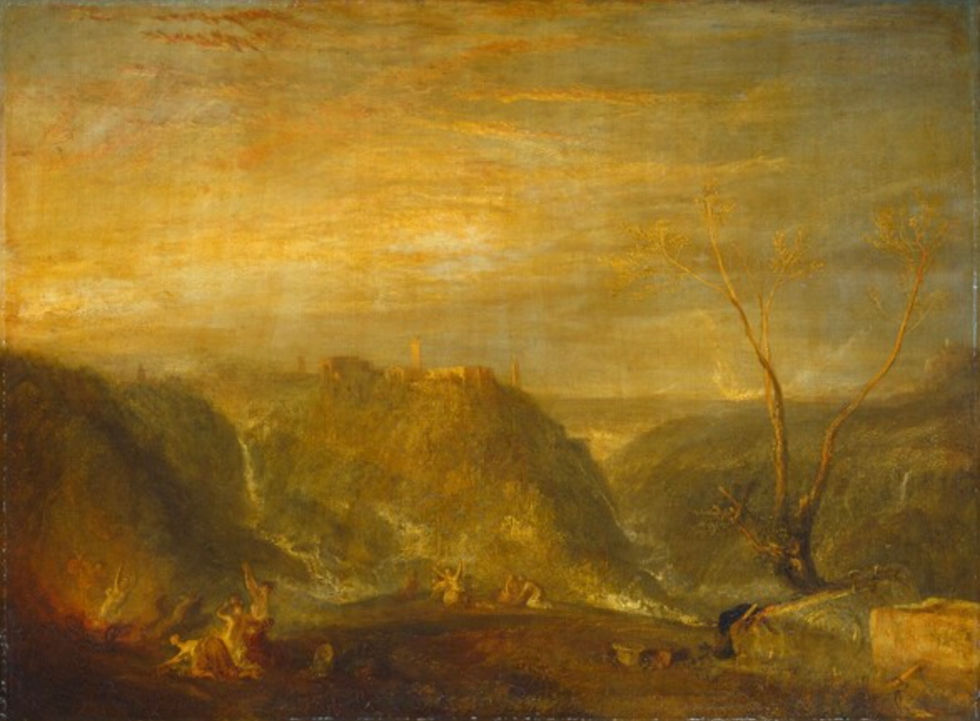Mehring sees: Turner's gaze
- Patrick Theimer
- Jul 20
- 3 min read
Updated: Sep 27
Across from my desk hangs an untitled work by Howard Mehring that at some point in its life was appended with the moniker (mist). The first time I saw it I thought "Turner". Every time I look up and see it I think "Turner". Anyone who sees it with me utters "Turner". It's impossible to believe Mehring did not channel Turner. But as we celebrate Turner's 250th birthday this April, it's rather incredible just how much Turner one can find.

Mehring's Untitled (mist) was completed sometime around 1957. This was a rather lyrical era for Mehring's painting, and this is one of the only paintings of his I've seen with anything that looks like a horizon or the semblance of a landscape. It's tumultuous, almost apocalyptic if not for an angelic white light breaking the foreground. Its like something has happened and is now starting to clear, a veil lifting to expose a consequential vastness that is either very near or very far. It invokes each of the four elements for me depending on the kind of day I am having. The color is an ambivalent emotion. If you cut the picture in half with your hand as you view it, the top half predicts where Mehring will eventually go with his painting. The bottom half is what he's already seen.
Mehring was born and raised in Washington D.C., and one of his favorite places to hit was the National Gallery. I can imagine his response to seeing Turner's The Rape of Proserpine which had been gifted to the NGA in 1951 and was likely on view at some point in Mehring's period of interest. A story about the change of seasons -- in a rather violent manner -- seems to fit Mehring's own version of the tale, if that's what it is. Allegorical. Tempestuous. Beheld.

But this particular Mehring is singular in his ouvre, mostly because it seems to focus on light. Mehring would go on to build a resume aligned to highly abstract color field painting, soaking and staining the surface to saturate color with and against negative, raw space. He liked to chase the edge, in and out, and his greatest paintings are immersive shadowless playgrounds of dissonant spaciality. Still, when asked to describe his painting, Mehring preferred the term "classical abstraction" to the more common abstract expressionism or colorfield. And I think that's what we see here. He loved Ingres, and the Italian Renaissance. And, I hope to assume, Turner. So perhaps this picture provides the lens through which he then often painted, a state of mind in which dapples of all-overs or broken colors chasing infinities and absolutes was as real as a Turner. Witnessing. Feeling. Shifting.
One of my favorite Turners is a small watercolor (I've always preferred his watercolors), 7x9", depicting a pink sky. Or rather, the "impression" of a pink sky, not too dissimilar to an impression of a sunrise :) . I see it when I see Wolf Kahn, or Mark Rothko, or even Barnett Newman. And I especially see it when I look at The Rape of Proserpine. It was Turner's late paintings, the ones he apparently hid from everyone for fear of their legitimacy, that I think finally revealled the way he witnessed just about everything. It's as though he would always squint, pull in his brow, taste the air, lean back... and breathe deep. The painting on top of his impressions was only the vessel to a buried treasure.
From now on I'm going to call this Mehring Untitled (Turner's Gaze). Painting appended.



Comments